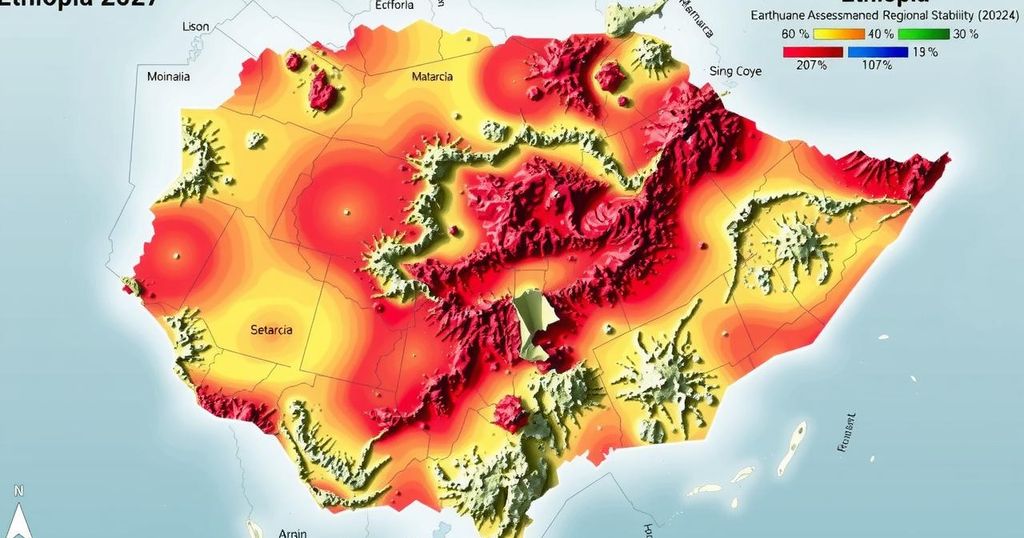Recent earthquakes in Ethiopia’s Afar region, including a significant quake of 8.1 magnitude, have raised concerns about the Grand Ethiopian Renaissance Dam (GERD) and potential impacts on Sudan. However, experts assure that the dam is not at risk as the seismic activity is distant. The dam is designed to withstand earthquakes, and further investigations into environmental effects are recommended.
Recent seismic activity, including an 8.1 magnitude earthquake, has raised concerns about the impact on the Grand Ethiopian Renaissance Dam (GERD) and the potential repercussions in Sudan. However, Sudanese geoscientists have reassured the public that no immediate threats exist for the GERD, emphasizing that the earthquakes originated over 100 kilometers away. The dam is built to withstand seismic events, and its structural integrity remains intact despite recent quakes in the area. Notably, the current geological movements have led to an evacuation of over 80,000 individuals in the Afar region due to safety precautions. Geoscience expert Abdelkarim El Amin has stated that the epicenter of the latest earthquakes is approximately 500 kilometers from the dam, thus alleviating concerns regarding any damage.
While there are discussions regarding low water levels in the GERD’s reservoir, these issues are not directly related to seismic activity. El Amin further clarified that dam designs incorporate considerations for seismic risk and that Ethiopia had conducted several studies prior to the GERD’s construction. Furthermore, he remarked on the necessity of scientific evaluation to discuss the GERD’s environmental implications rather than focus solely on political narratives. In the event of a disaster scenario, the ramifications for Sudan and Egypt could be severe due to the geography of the Nile basin, which is susceptible to flooding. Therefore, he advocated for a collaborative effort among scientists to investigate and address environmental concerns surrounding the dam and its broader influence on water resources in the region.
The Grand Ethiopian Renaissance Dam (GERD) has been a focal point of regional discussions between Ethiopia, Sudan, and Egypt, primarily because of its implications on water resource management and interstate relations. The dam, which has faced opposition and concern in its operational phases, is vital for Ethiopia’s economic growth and energy production. The Afar region’s recent seismic activity has ignited renewed anxiety about the stability and safety of the dam, particularly considering the potential downstream effects on Sudan and Egypt, countries that rely heavily on the Nile for water. The experts’ reassurances stem from geoscientific assessments indicating that the GERD was constructed with seismic resilience in mind despite the earthquakes. Ethiopia’s history of earthquakes, combined with the strategic significance of the GERD, emphasizes the need for ongoing scientific discourse to effectively manage and anticipate any potential environmental impacts associated with seismic events and their influence on vital infrastructure in the region.
In summary, while recent earthquakes in Ethiopia’s Afar region have triggered concerns regarding the stability of the Grand Ethiopian Renaissance Dam, expert evaluations indicate that the risk to the dam remains minimal. The GERD is built to withstand seismic activities, and its structural integrity is not in jeopardy from these distant earthquakes. Nevertheless, open scientific dialogue and investigations are essential to address the environmental concerns associated with the dam’s impact on the Nile basin and surrounding areas.
Original Source: www.dabangasudan.org






